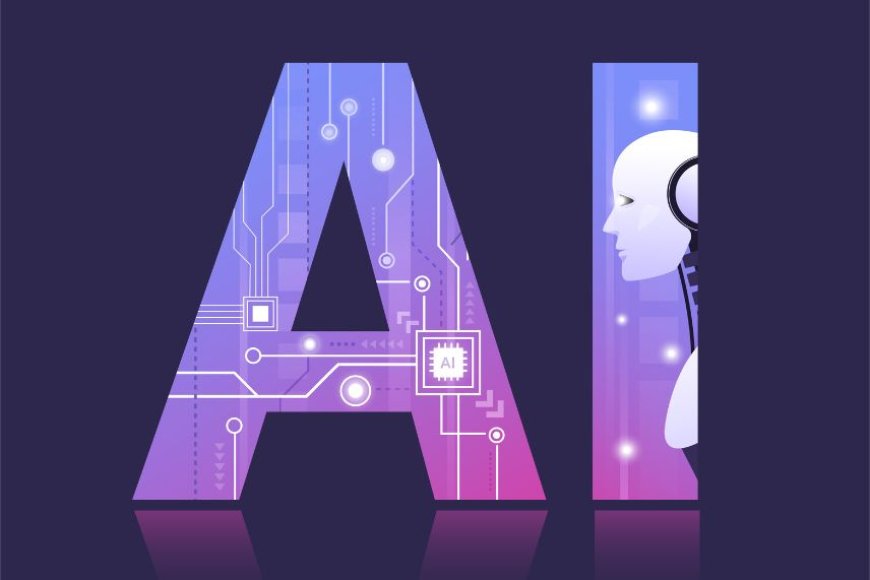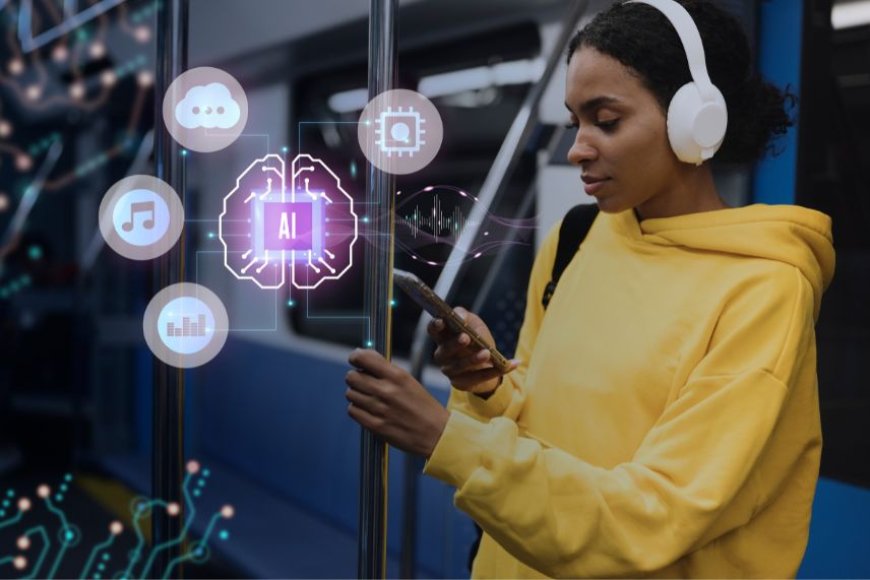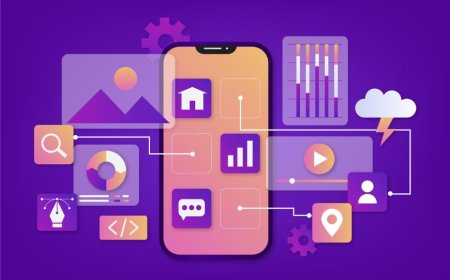Demystifying AI: A Comprehensive Introduction
Get a comprehensive introduction to AI with Demystifying AI. Explore Tectoks and other key concepts on this informative website.

1. Introduction:
Artificial intelligence (AI) is the field of computer science that aims to create machines and systems that can perform tasks that normally require human intelligence, such as reasoning, learning, decision-making, perception, and communication. AI has been one of the most fascinating and ambitious endeavors in human history, as well as one of the most challenging and controversial ones.

The history of AI can be traced back to ancient times, when people imagined and invented machines and devices that could mimic or surpass human abilities, such as automata, calculators, and chess-playing machines. The term “Artificial Intelligence” was coined by John McCarthy in 1956, when he organized the first conference on the topic at Dartmouth College. Since then, AI has gone through several phases of development, from the early enthusiasm and optimism of the 1950s and 1960s to the disappointment and criticism of the 1970s and 1980s to the resurgence and advancement of the 1990s and 2000s to the current state of the art and prospects of the 2010s and 2020s.
One of the main distinctions in AI is between narrow AI, general AI, and super AI. Narrow AI refers to AI systems that can perform specific and well-defined tasks, such as face recognition, spam filtering, or chess playing. General AI refers to AI systems that can perform any intellectual task that a human can, such as understanding natural language, solving complex problems, or exhibiting common sense. Super AI refers to AI systems that can surpass human intelligence and capabilities, such as creating new knowledge, inventing new technologies, or dominating other intelligent beings.
The purpose of this blog post is to provide a comprehensive introduction to AI, including its overview, basics, applications, interaction, automation, and online We will explore the main concepts, techniques, tools, and examples of AI, as well as the benefits, challenges, and implications of AI for human society and civilization. We hope that this blog post will help you to demystify AI and inspire you to learn more about this fascinating and important field.
2. Artificial Intelligence Overview
AI systems are composed of several components and processes that enable them to perform intelligent tasks. Some of the main components and processes are:
-
Data: Data is the raw material that AI systems use to learn from and act upon. Data can be structured or unstructured, numerical or textual, static or dynamic, and can come from various sources, such as sensors, databases, documents, or the web.
-
Algorithms: Algorithms are the rules and instructions that AI systems follow to process data and perform tasks. Algorithms can be deterministic or probabilistic, supervised or unsupervised, and can use various techniques, such as search, optimization, logic, or statistics.
-
Models: Models are the representations and abstractions that AI systems use to capture the patterns and relationships in data and tasks. Models can be symbolic or numeric, discrete or continuous, and can use various structures, such as graphs, trees, matrices, or tensors.
-
Learning: Learning is the process that AI systems use to improve their performance and adapt to new data and tasks. Learning can be active or passive, online or offline, and can use various methods, such as reinforcement learning, deep learning, or transfer learning.
-
Inference: Inference is the process that AI systems use to generate outputs and predictions based on data and models. Inference can be deductive or inductive, exact or approximate, and can use various mechanisms, such as reasoning, classification, or regression.
AI systems can be classified into different types and methods based on their approach and design. Some of the main types and methods are:
-
Symbolic AI: Symbolic AI is the type of AI that uses symbols and logic to represent and manipulate knowledge and reasoning. Symbolic AI can use methods such as rule-based systems, expert systems, or knowledge graphs.
-
Connectionist AI: Connectionist AI is the type of AI that uses networks of nodes and connections to model and learn from data and tasks. Connectionist AI can use methods such as artificial neural networks, convolutional neural networks, or recurrent neural networks.
-
Evolutionary AI: Evolutionary AI is the type of AI that uses evolutionary principles and mechanisms to optimize and evolve solutions and behaviors. Evolutionary AI can use methods such as genetic algorithms, genetic programming, or evolutionary strategies.
-
Hybrid AI: Hybrid AI is the type of AI that combines and integrates different types and methods of AI to achieve better results and performance. Hybrid AI can use methods such as neuro-symbolic systems, neuro-evolutionary systems, or multi-agent systems.
AI systems can be applied to various subfields and domains that require human-like intelligence and capabilities. Some of the main subfields and applications are:
-
Natural Language Processing: Natural Language Processing (NLP) is the subfield of AI that deals with the analysis and generation of natural language, such as text and speech. NLP can be applied to tasks such as machine translation, sentiment analysis, question answering, or chatbots.
-
Computer Vision: Computer Vision is the subfield of AI that deals with the understanding and manipulation of visual information, such as images and videos. Computer Vision can be applied to tasks such as face recognition, object detection, scene segmentation, or image synthesis.
-
Speech Recognition: Speech recognition is a subfield of AI that deals with the recognition and transcription of speech signals, such as voice and audio. Speech recognition can be applied to tasks such as speech-to-text, voice assistants, speech synthesis, or speaker identification.
-
Machine Translation: Machine Translation is the subfield of AI that deals with the translation of natural language from one language to another. Machine translation can be applied to tasks such as cross-lingual communication, multilingual content, or language learning.
-
Robotics: Robotics is the subfield of AI that deals with the design and control of machines and systems that can sense, act, and interact with the physical world, such as robots and drones. Robotics can be applied to tasks such as navigation, manipulation, exploration, or entertainment.
-
Game-Playing: Game-Playing is the subfield of AI that deals with the creation and playing of games and puzzles, such as chess, Go, or Sudoku. Game-playing can be applied to tasks such as strategy, planning, learning, or creativity.
3. AI Applications in Daily Life
AI applications in daily life are becoming more and more widespread, as AI is used to enhance various domains and industries, such as education, health care, entertainment, finance, and e-commerce.
Here are some examples and use cases of how AI is used in these domains:
-
Education: AI can be used to improve the quality and accessibility of education by providing personalized learning, adaptive assessment, intelligent tutoring, and feedback systems. For example, Duolingo is a language-learning app that uses AI to adapt lessons and exercises to the learner’s level, goals, and preferences. Coursera is an online education platform that uses AI to grade assignments, recommend courses, and provide feedback to learners and instructors. Socratic is an app that uses AI to help students with their homework by providing step-by-step explanations, videos, and online resources for various subjects.
-
Health care: AI can be used to improve the diagnosis, treatment, and prevention of diseases by providing medical image analysis, drug discovery, disease prediction, and health monitoring systems. For example, IBM Watson Health is a platform that uses AI to analyze medical data, such as electronic health records, clinical trials, and medical literature, and provide insights and recommendations to doctors and researchers. DeepMind Health is a platform that uses AI to develop and apply new technologies to health care, such as AlphaFold, which can predict the 3D structure of proteins, and Streams, which can alert clinicians to patients at risk of deterioration.
-
Entertainment: AI can be used to create and enhance various forms of entertainment, such as music, movies, games, and art. For example, Spotify is a music streaming service that uses AI to analyze the user’s listening habits, preferences, and mood and provide personalized playlists, recommendations, and radio stations. Netflix is a video streaming service that uses AI to analyze the user’s viewing history, ratings, and feedback and provide personalized recommendations, suggestions, and previews. OpenAI is a research organization that uses AI to create and explore new forms of entertainment, such as DALL-E, which can generate images from text, and Jukebox, which can generate music from lyrics and genres.
-
Finance: AI can be used to improve the efficiency and security of financial services, such as banking, trading, and insurance. For example, PayPal is a payment service that uses AI to detect and prevent fraud by analyzing the user’s behavior, location, and device and flagging suspicious transactions. Robinhood is a trading app that uses AI to provide financial education, news, and analysis and help users make informed investment decisions. Lemonade is an insurance company that uses AI to provide fast and easy insurance by using chatbots to handle claim SMS and behavioral economics to reduce fraud.
-
E-commerce: AI can be used to improve the customer experience and satisfaction of online shopping by providing product search, recommendation, and review systems. For example, Amazon is an e-commerce giant that uses AI to optimize its operations, such as inventory management, delivery, and customer service, and to provide personalized recommendations, suggestions, and deals to its customers. Alibaba is an e-commerce giant that uses AI to enhance its platforms, such as Taobao, Tmall, and AliExpress, and to provide various features, such as image search, voice assistants, and live streaming. Yelp is a platform that uses AI to help users find and review local businesses, such as restaurants, bars, and shops, and to provide various features, such as photo classification, sentiment analysis, and personalized ads.
Some of the benefits and advantages of AI are:
-
Efficiency: AI can perform tasks faster and more accurately than humans by using large amounts of data, powerful computing, and sophisticated algorithms. AI can also automate and optimize various processes, such as scheduling, routing, and resource allocation, and reduce human errors and costs.
-
Accuracy: AI can provide more reliable and consistent results than humans by using objective and quantitative measures and avoiding subjective and qualitative biases. AI can also improve the quality and accuracy of data by using data cleaning, validation, and augmentation techniques and reducing noise and outliers.
-
Personalization: AI can provide more customized and tailored services and products than humans by using data mining, machine learning, and natural language processing techniques and understanding the user’s needs, preferences, and behavior. AI can also enhance the user’s engagement and satisfaction by providing feedback, guidance, and support and adapting to the user’s feedback and behavior.
-
Innovation: AI can create and discover new and novel solutions and products faster than humans by using generative, evolutionary, and creative techniques and exploring the search space and the solution space. AI can also inspire and assist human creativity by providing suggestions, examples, and tools and collaborating with humans.
Some of the challenges and limitations of AI are:
-
Data quality: AI depends on the quality and quantity of data that is used to train and test the models and systems. Data quality can be affected by various factors, such as incompleteness, inconsistency, irrelevance, and noise. Data quality can also be influenced by the data collection, processing, and storage methods, such as sampling, labeling, and encryption.
-
Bias: AI can inherit and amplify the bias and discrimination that exist in the data, the algorithms, and the users. Bias can be caused by various factors, such as a lack of diversity, representation, and fairness in the data, the algorithms, and the users. Bias can also be influenced by design, development, and deployment choices, such as objectives, metrics, and evaluation methods.
-
Ethics: AI can raise various ethical and social issues, such as privacy, security, accountability, and transparency. Ethics can be affected by various factors, such as the values, norms, and laws of society, the stakeholders, and the users. Ethics can also be influenced by governance, regulation, and oversight mechanisms, such as standards, guidelines, and audits.
-
Explainability: AI can be difficult to understand and explain, especially for complex and black-box models and systems. Different factors can affect explainability, such as the complexity, uncertainty, and variability of the models and systems. Explainability can also be influenced by communication, interpretation, and visualization methods such as natural language, diagrams, and images.
4. AI and Human Interaction:
AI and human interaction is a fascinating and complex topic that explores the different ways and modes of how AI and humans interact, the psychological and social aspects of how AI and humans perceive, understand, and trust each other, and the impact and implications of how AI and humans influence, collaborate, and compete with each other.

Here are some details about each of these aspects:
-
Ways and modes of interaction: AI and humans can interact through various ways and modes, such as voice, text, gesture, and emotion. Voice and text are the most common and natural ways of communicating, as they use language and speech to convey information and intentions. Gestures and emotions are the more subtle and expressive ways of communicating, as they use body and facial movements to convey feelings and attitudes. For example, Siri is a voice assistant that uses voice and text to interact with users by answering questions, performing tasks, and providing suggestions. Pepper is a humanoid robot that uses gestures and emotions to interact with users by recognizing faces, emotions, and speech and expressing emotions, gestures, and speech.
-
Psychological and social aspects of interaction: AI and humans can have various psychological and social aspects of interaction, such as empathy, transparency, and feedback. Empathy is the ability to understand and share the feelings and perspectives of others and to respond appropriately. Transparency is the ability to explain and justify the actions and decisions of oneself and others and to provide evidence and reasoning. Feedback is the ability to provide and receive positive and negative comments and suggestions, and to improve and learn from them. For example, Woebot is a chatbot that uses empathy to interact with users by providing cognitive behavioral therapy and emotional support. LIME is a framework that uses transparency to interact with users by providing explanations for the predictions and outcomes of machine learning models. Duolingo is a language learning app that uses feedback to interact with users by providing personalized learning, adaptive assessment, and feedback systems.
-
Impact and implications of interaction: AI and humans can have various effects and implications of interaction, such as productivity, creativity, and cooperation. Productivity is the ability to perform tasks efficiently and effectively and to achieve goals and outcomes. Creativity is the ability to generate and discover new and novel ideas and products and to solve problems and challenges. Cooperation is the ability to work together, coordinate with others, and share and exchange resources and information. For example, Google Docs is a platform that uses AI to enhance the productivity of users by providing features such as smart compose, grammar check, and voice typing. OpenAI is a research organization that uses AI to inspire and assist the creativity of users by providing tools and frameworks such as DALL-E, Jukebox, and GPT-3. RoboCup is a competition that uses AI to promote and evaluate the cooperation of users by providing challenges and tasks such as soccer, rescue, and home.
5. AI Online: A Guide to Learning and Practicing Artificial Intelligence on the Web
Artificial intelligence (AI) is a fascinating and rapidly evolving field that has many applications and challenges. If you are interested in learning more about AI or want to improve your AI skills and knowledge, you might be wondering where to start and how to proceed. Fortunately, there are many online platforms and resources that offer AI-related courses, tutorials, projects, and communities that can help you achieve your learning goals. In this article, we will introduce some of these online platforms and resources and provide some tips and advice on how to learn, practice, and improve AI online.
Online Platforms and Resources for AI
There are many online platforms and resources that offer AI-related content, such as:
-
Coursera: Coursera is one of the most popular online learning platforms that offers courses, specializations, and degrees from top universities and organizations around the world. You can find many AI-related courses on Coursera, covering topics such as machine learning, deep learning, natural language processing, computer vision, robotics, and more. You can also earn certificates and credentials that can boost your resume and career prospects. Some of the most popular AI courses on Coursera are: Machine Learning by Stanford University, Deep Learning by deeplearning.ai, and AI for Everyone by deeplearning.ai.
-
EdX: edX is another online learning platform that offers courses, programs, and degrees from leading universities and institutions. You can also find many AI-related courses on edX, covering topics such as artificial neural networks, reinforcement learning, computer vision, natural language processing, and more. You can also earn certificates and credentials that can demonstrate your skills and knowledge. Some of the most popular AI courses on edX are Artificial Intelligence by Columbia University, Introduction to Artificial Intelligence by Microsoft, and AI Ethics by Harvard University.
-
Kaggle: Kaggle is an online platform that hosts data science and machine learning competitions, datasets, notebooks, and courses. You can use Kaggle to practice your AI skills and knowledge, learn from other experts, and participate in challenges that can earn you prizes and recognition. You can also find many AI-related courses on Kaggle, covering topics such as Python, SQL, data visualization, machine learning, deep learning, and more. Some of the most popular AI courses on Kaggle are: Python, Intro to Machine Learning, and Deep Learning.
-
Stack Overflow: Stack Overflow is an online community of programmers and developers who ask and answer questions related to coding and software development. You can use Stack Overflow to find answers to your AI-related questions or help others with their questions. You can also learn from the best practices and solutions shared by other users and earn reputations and badges that can showcase your expertise. You can also find many AI-related tags on Stack Overflow, such as machine-learning, deep-learning, tensorflow, and pytorch.
Tips and Advice for Learning and Practicing AI Online
Learning and practicing AI online can be fun and rewarding, but it can also be challenging and overwhelming.
Here are some tips and advice that can help you make the most of your online learning experience:
-
Choose the right level, topic, and format for your learning goals. Depending on your background, interests, and objectives, you might want to choose different levels, topics, and formats for your online learning. For example, if you are a beginner, you might want to start with some introductory courses that cover the basics of AI, such as AI for Everyone or Introduction to Artificial Intelligence. If you are more advanced, you might want to dive deeper into some specific topics or domains of AI, such as natural language processing or computer vision. If you are more interested in hands-on learning, you might want to choose some courses or platforms that offer interactive exercises, projects, or competitions, such as Kaggle or Machine Learning.
-
Follow the best practices and guidelines for online learning. Online learning can offer you a lot of flexibility and convenience, but it also requires a lot of self-discipline and motivation. To ensure that you stay on track and achieve your learning outcomes, you might want to follow some best practices and guidelines for online learning, such as: setting a realistic and achievable learning schedule; creating a dedicated and comfortable learning environment; taking notes and reviewing the material regularly; completing the assignments and quizzes; seeking feedback and support from instructors and peers; and celebrating your progress and achievements.
-
Join online discussions and events related to AI. One of the best ways to learn and practice AI online is to join online discussions and events related to AI. You can use online platforms and resources such as Stack Overflow, Reddit, Quora, Medium, YouTube, Meetup, and Eventbrite to find and participate in online discussions and events related to AI. You can use these platforms and resources to ask and answer questions, share your insights and opinions, learn from other experts and enthusiasts, network and collaborate with other learners and practitioners, and discover new opportunities and trends in AI.
Explore and Experiment with AI Online
AI is a fascinating and rapidly evolving field that has many applications and challenges. Learning and practicing AI online can help you gain valuable skills and knowledge, enhance your resume and career prospects, and satisfy your curiosity and passion. There are many online platforms and resources that offer AI-related courses, tutorials, projects, and communities that can help you achieve your learning goals. You can also use some tips and advice to make the most of your online learning experience. We encourage you to explore and experiment with AI online and to share your experiences and feedback with the online AI community. Happy learning! ????
6. Conclusion: A Brief Introduction to AI
In this blog post, we have given you a brief introduction to AI, covering some of the basics, applications, interaction, automation, and online aspects of this fascinating and rapidly evolving field. We hope that this introduction has given you some insights and implications about the AI field and its practice, such as:
-
AI is a broad and interdisciplinary field that encompasses many subfields, such as machine learning, natural language processing, computer vision, robotics, and more. Each subfield has its own methods, challenges, and goals, but they also share some common principles, such as data, algorithms, models, and evaluation.
-
AI has many applications and benefits for various domains and industries, such as education, health, entertainment, business, and more. AI can help us solve problems, enhance productivity, improve quality, and create new opportunities. However, AI also has some limitations and risks, such as ethical, social, legal, and technical issues, that need to be addressed and mitigated.
-
AI can interact with humans and other agents in various ways, such as through speech, text, gestures, emotion, and more. AI can also learn from and adapt to the feedback and behavior of humans and other agents, such as through reinforcement learning, active learning, and transfer learning. However, AI also needs to ensure that the interaction is effective, efficient, and trustworthy, such as through explainability, transparency, and accountability.
-
AI can automate many tasks and processes that are repetitive, tedious, or complex, such as data analysis, image recognition, natural language generation, and more. AI can also augment and assist humans in performing tasks and processes that require creativity. judgment, or expertise, such as writing, designing, teaching, and more. However, AI also needs to balance the trade-off between automation and human involvement, such as autonomy, collaboration, and control.
-
AI can be learned and practiced online using various platforms and resources, such as Coursera, edX, Kaggle, and Stack Overflow. AI can also be explored and experimented with online using various tools and frameworks, such as TensorFlow, PyTorch, Scikit-learn, and more. However, AI also needs to follow some best practices and guidelines for online learning and practicing, such as choosing the right level, topic, and format, following the curriculum and assessment, and joining the online community and events.
We hope that this brief introduction to AI has sparked your interest and curiosity in this field and motivated you to learn and practice more. As the famous AI pioneer John McCarthy once said, “As soon as it works, no one calls it AI anymore.” Therefore, we encourage you to explore and experiment with AI online and discover the wonders and possibilities of this field. Remember, AI is not only a science but also an art. Happy learning!
What's Your Reaction?











































































